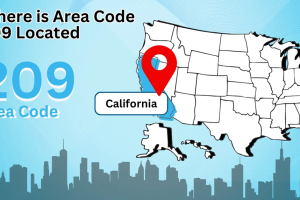Content Attributes
Marketing is a broad concept that many people confound with public relations and advertising activities. In actuality, it is an umbrella term, and elements such as promotions, sales, and public relations constitute a marketing strategy.
It’s next to impossible to overlook the influential power and significance of marketing. From startups to large-scale corporations, every business increases sales and strengthens brand recognition through marketing techniques. With finance being the brain of any organization, marketing is the heart that circulates blood and oxygen throughout the various facets of the business.
The business world repletes with innovative technologies, products, business solutions, and much more. However, innovation alone is not enough to grow a company’s presence and make it flourish. A comprehensive and effective marketing strategy can bring these innovations to the market to generate revenue and increase profits.
Since marketing plays a significant role in modern-day business. It’s pivotal to assess the promotion and communication schemes thoroughly and progressively. Often, enterprises execute marketing activities using two methods. Either the prime objective of the campaign is to target the entire audience. Or it focuses on a specific group of customers. These two approaches fall into two categories. The former is known as above-the-line marketing, and the latter is below-the-line marketing.
The article offers insights into what each of these marketing strategies entails and their pros:
Above the line (ATL) marketing
While businesses, undoubtedly, leverage the best marketing tools and strategies to generate leads and boost sales. Above-the-line marketing, on the other hand, takes a different, traditional approach. It takes advantage of conventional mediums to reach the masses.
The core objective of this marketing approach is not the concise measurement of conversion rates. Instead, it is an untargeted form of marketing that zeros in on increasing brand visibility and putting customers into the picture.
Examples
The following examples demonstrate the various formats of above the line marketing:
- Television
The average time spent by an individual watching television is 3.2 hours daily. The fact alone shows the prominent and consequential impact of a television marketing campaign. In addition, people generally prefer dynamic images and videos over static ones. Therefore, businesses can reach a vast and diverse range of local, national, and foreign audiences through this communication medium.
- Radio
One of the oldest means of communication, radio is a suitable option for companies on a shoestring budget due to its affordability. Moreover, since people generally listen to the radio while driving to work or at home, its frequency and repetition can meet advertisement demands.
- Newspaper and Magazine
It is another above-the-line marketing approach that suits best for the local and regional audiences. Newspapers already have a designated space for marketers to advertise their products or services. In contrast, magazines encompass various niches, and it’s contingent upon marketers which readership they wish to target.
Advantages
- Extensive reach
There is no other strategy that can match the reach of above-the-line marketing mediums. And therefore, it increases the probability of a high return on investment.
- Effective brand awareness
For any business out there, customers are the main focus. ATL marketing enhances brand awareness since it allows marketers to spread awareness about products and services to the masses through various communication channels.
Below the line (BTL) marketing
Also referred to as direct marketing, BTL focuses on a particular, targeted group of consumers. Below-the-line marketing makes use of unconventional mediums to enhance conversions. This marketing approach aims to build personalised relationships with existing and prospective customers and gain their trust.
Marketers who wish to implement this strategy should identify their target audience, understand their behaviors, and build content that aligns with them.
Examples
Here are a few examples that showcase below the line marketing:
- Door-to-door marketing
The most common form of BTL, door-to-door marketing, is an old yet effective strategy to draw in customers. Highly competent and trained sales reps sell products or services in a personalized manner without being annoying. The ultimate goal/purpose of this strategy is to establish positive customer relationships.
- Direct mail marketing
If used accurately, direct mail marketing can increase conversion rates and yield remarkable results. A professional copywriter formulates compelling messages that resonate with the customers and entice them to purchase from the brand.
- In-store marketing
In-store marketing usually occurs at retail stores where brands offer different promotional offers such as giveaways and discounts. The brick-and-mortar shops allow brands to attract customers and provide exceptional customer services during the shopping spree.
Advantages
- Extremely focused
Since BTL marketing concentrates on the needs and preferences of a specific audience segment, it tends to increase conversion rates rapidly.
- Easy to measure
BTL marketing allows businesses to gain fruitful insights into customers’ interests. Marketers can keep tabs on the campaigns and measure their effectiveness.
Which one is best for your company?
Before settling on any specific marketing strategy, it’s crucial to realize that each has its own set of advantages and drawbacks. It is relevant to note that there is no one-size-might-fit-all approach in terms of marketing activities. For some organizations, ATL marketing may work the best. However, others might need to append BTL with it to gain qualitative outcomes. And while ATL may seem like the easiest path to increase brand identity, BTL marketing tends to bring in impressive ROI.
You might wonder which strategy to choose? The long-standing adage “don’t put your eggs in one basket” stands to reason for deciding marketing activities.
Instead of making the most of a single marketing tactic, incorporating both can yield phenomenal results. Businesses can reach a broad range of undifferentiated audiences and achieve engagement with a particular consumer segment, the best of both worlds.
It all eventually boils down to the capability of marketing team members to study and review the ongoing market trends and formulate a budget plan. Other critical elements that can help decide which one to go for include business goals and targets, available resources, and marketers within an organization. Therefore, carefully evaluate the needs and preferences of your brand and determine how to allot the budget.
Final words
Assuredly, there exists a wide range of marketing strategies for businesses to capitalize on in their pursuit to broaden the customer base, boost sales, and meet business goals. These techniques generally fall into two categories, namely above-the-line marketing and below-the-line marketing.
Put it briefly, ATL marketing is a wide-ranging and macro-type brand-building campaign that centres on the powerful and dominant brand awareness for the clientele and customers. In contrast, BTL marketing is an intensely focused marketing effort that stresses personification and conversions. One of the principal differences between marketing tactics is the communication means, so you can decide which one you prefer keeping this in mind.



